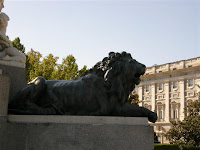
Caricature of Peter Falk as Lieutenant Columbo.
- Columbo is an American crime fiction TV series starring Peter Falk as Lieutenant Columbo, a homicide detective with the Los Angeles Police Department. The show popularized the inverted detective story format; each episode began by showing the commission of the crime and the perpetrator. The character first appeared in an 1960 episode of the anthology series The Chevy Mystery Show (later to be adapted into a stage play). A pilot movie was broadcast in 1968; the series aired regularly from 1971 to 1978, and later, sporadically from 1989 to 2003, when the last episode was broadcast.
- The character of Columbo was created by Richard Levinson and William Link, who claimed that Columbo was partially inspired by the Crime and Punishment character, Porfiry Petrovich, as well as G. K. Chesterton's humble clerical detective Father Brown. Other sources claim Columbo's character is based on Inspector Fichet from the classic French suspense-thriller Les Diaboliques (1955).[citation needed] Columbo is a shabby, apparently slow-witted police detective; although, as criminals eventually learn, appearances can be deceiving. Columbo uses his deferential and absent-minded persona to lull criminal suspects into a false sense of security; meanwhile, he solves his cases by paying close attention to tiny inconsistencies in a suspect's story and by hounding the suspect until he or she confesses. Columbo's signature technique is to exit the scene of an interview, invariably stopping in the doorway or returning a moment later to ask "just one more thing" of a suspect. The "one more thing" always brings to light the key inconsistency.
- Columbo's wardrobe was provided by Peter Falk himself. They were his own clothes.
- Columbo's battered car is a 1959 Peugeot 403 convertible, which Falk selected personally from the studio's inventory. When Columbo boasts that it's a rare automobile, he isn't lying: only about 500 of them were built as two-door convertibles instead of four-door hardtops, and the car is one of only two of this model in the US. (In "Identity Crisis", Columbo tells the murderer that his is one of only three in the country.)
- Peter Falk would often ad-lib "Columbo-isms" (fumbling through pockets for a piece of evidence and discovering a grocery list, asking to borrow a pencil, becoming distracted by something irrelevant in the room at a dramatic point in a conversation with a suspect, et cetera) into his performance as a way to keep his fellow actors off-balance. He felt it helped to make their characters' confused/impatient reactions to Columbo's antics more genuine.
Directors/writers
- Steven Spielberg and Jonathan Demme each directed episodes of the show during its first run. Jonathan Latimer and Steven Bochco were once writers.
- Ben Gazzara directed episodes "Troubled Waters" (1975) and "A Friend in Deed" (1974).
- Peter Falk himself directed the last episode of the 1st season, "Blueprint For Murder".
- Nicholas Colasanto, who acted in Raging Bull and Cheers (as Coach), directed some episodes, including "Swan Song" with Johnny Cash. However, "Étude in Black", which is credited to Colasanto, was actually co-directed by its co-stars John Cassavetes and Peter Falk as a favor to their friend Colasanto. This has given rise to the false rumor that Cassavetes sometimes directed under the pseudonym Nicholas Colasanto.
- Patrick McGoohan directed five episodes (including three of the four in which he played the murderer) and wrote and produced two (including one of these).
- Vincent McEveety was a frequent director, and homage was paid to him by a humorous mention of a character with his surname in the episode "Undercover" (which he directed).
- The whole Columbo collection can be found on Amazon here.





























































